As of August 2025, Wisconsin 101 is on an indefinite hiatus. It is our sincere hope that the project will continue in some form in the future, but for the time being we are no longer accepting essay submissions
Thank you sincerely for your support.
Interested in writing for Wisconsin 101?
You can propose your own idea or scroll to choose from one of the objects in the gallery below.
We are also looking for proposals related to the following topics:
- Natural resources
- Civil rights
- The Conservation Movement
- Arts and culture
- Labor history
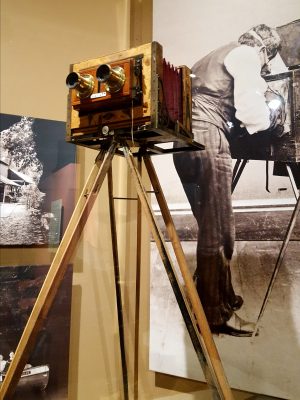
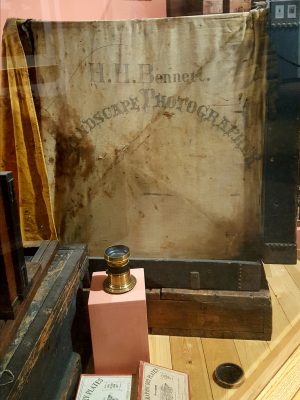
HH Bennett Photography Equipment
The HH Bennett Studio and Museum in Wisconsin Dells has a number of objects in their collection associated with the noted Wisconsin photographer HH Bennett (including the stereoscopic view camera and the portable darkbox, shown above). These objects could let you explore the history of photography, Bennett and his business, and the early days of tourism in the Dells.
Image courtesy of the WHS, HH Bennett Studio & Museum.
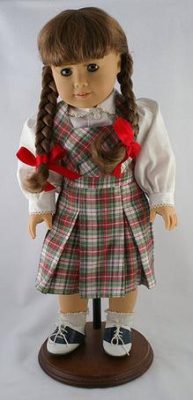
American Girl Doll
Pleasant Rowland formed the Pleasant Company in Middleton in 1986 to manufacture and sell American Girl Dolls, a line of products designed to teach aspects of American history through the perspective of a girl living in that period. What does this object tell us about toys, girlhood, and teaching?
Image courtesy of Wikimedia Commons.
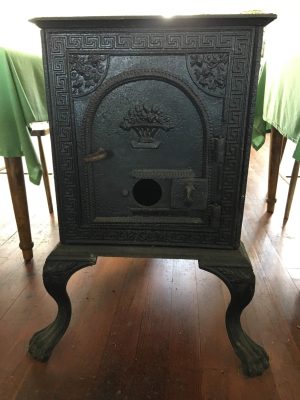
Box Stove
One of the few surviving objects from the First Capitol at Belmont, Wisconsin, this stove is believed to have heated the Council House where territorial legislation was voted on in 1836. Before moving to Madison, the territorial government sold most of the objects used in this first session. Through this stove, explore the role of heating and comfort in early Wisconsin and how this object is directly related to the decision to establish Madison as the State Capital.
Image courtesy of the WHS, First Capitol Site.
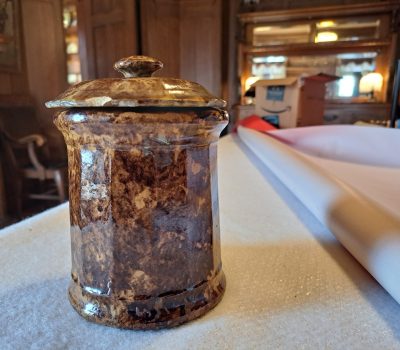
Tobacco Humidor
This molded storage container with lid was made by the Baraboo Pottery which was started in 1851 by Philipp Pointon, an immigrant from Staffordshire, England. The pottery was in production for 6 years and made tens of thousands of pieces of stoneware for the surrounding area. Little was known about the types of pottery made by the Pointons until Wisconsin’s largest cache of mid 19th century potsherds was dug up in 2020 in a backyard in Baraboo.
Object courtesy of the Sauk County Historical Society. Image courtesy of Tom Broman.
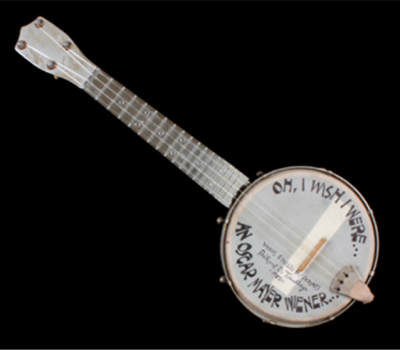
The Oscar Mayer Banjo-Ukulele
Richard Trentlage recorded the jingle “Oh I wish I were an Oscar Mayer Wiener…” on this banjo-ukulele in 1962. What could this object tell us about the meat industry in Wisconsin, advertising, or music in our state?
Image courtesy of the Wisconsin Historical Society, Image ID 106251
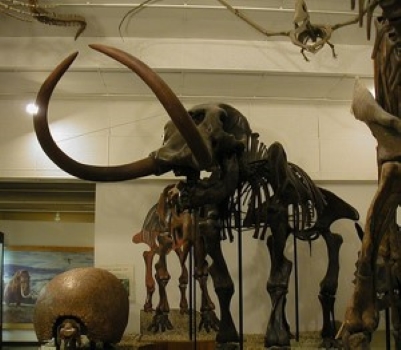
Boaz Mastodon
Did you know that the Geology Museum on UW-Madison’s campus houses the skeleton of an ice age mastodon? Discovered in the nineteenth century, and reconstructed over a hundred years ago, studying this object could lead you to research questions about prehistoric fauna, the history of university science collection, or the geologic changes in our state’s deep history.
Image courtesy of Wikipedia
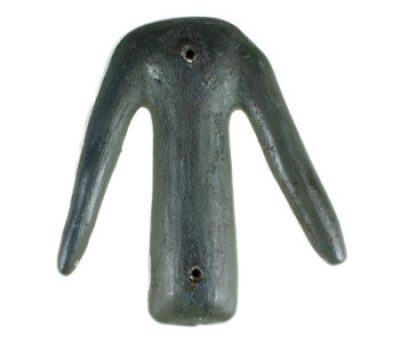
Cast Iron Effigy Mound Model
Built mostly during the Late Woodland Period, earthwork effigy mounds were once a prominent feature of the Wisconsin landscape. This model was designed by naturalist Increase Lapham based on a mound surveyed in Dodge County was created for exhibit at the 1876 World’s Fair in Philadelphia. This object offers opportunities to dive into the history of the mounds and the peoples who built them, but also into the history of anthropology, Increase Lapham, and both the promotion and conservation of the mounds.
Image courtesy of the Wisconsin Historical Society, Object #1975.8.12
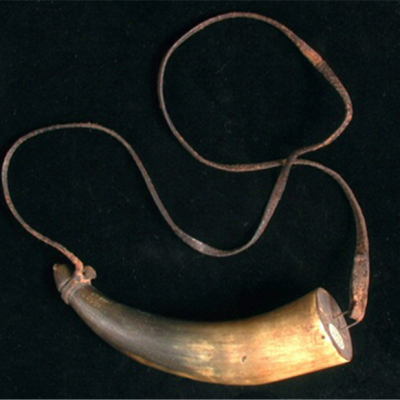
Black Hawk War Powder Horn
Carried by an unknown member of Col. Henry Dodge’s militia during the spring and summer of 1832, this object would make an interesting project for anyone interested in the territorial history of the state, military history, or settler colonialism.
The Wisconsin Historical Society also holds a sword and scabbard that belonged to Maj. John Rountree (a founder of Platteville) carried during the Black Hawk War.
Image courtesy of the Wisconsin Historical Society, Object #1947.851
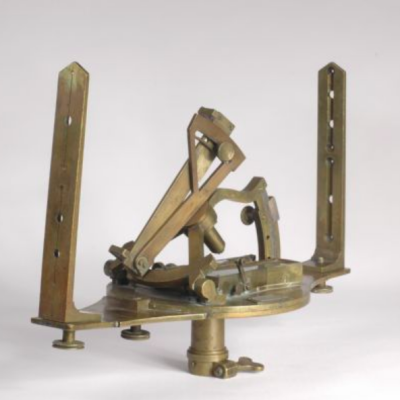
Burt’s Solar Compass
Every wonder why land in Wisconsin was laid out in a grid pattern? This compass can help you dive into that history. The Burt Solar Compass was used to survey land in Wisconsin in the 1840s and 50s.
Image courtesy of the Wisconsin Historical Society, Image ID 99497
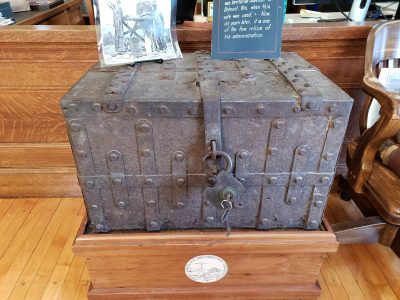
Strongbox
One of two known objects related to the First Capitol at Belmont, this strongbox is now located at the Mineral Point Public Library.
Image courtesy of the WHS, First Capitol Site.
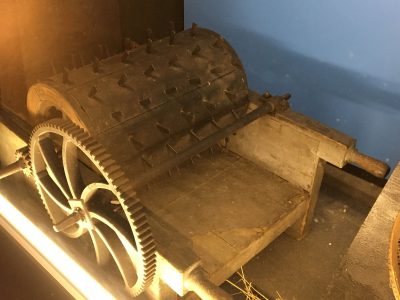
Mechanical Grain Thresher
Also known as a ‘ground hog’ thresher, this nineteenth century machine was used to knock grain from the stalk. Prior to it’s invention, wheat had to be flailed by hand. J.I. Case of Racine started out improving upon machinery like this.
Image courtesy of the WHS, Stonefield Site.

Bull Halter
Patented by Henry Masbruch with a prototype built by Frank Russel of Platteville, this object was designed to mitigate the danger bulls posed to farmers. What can this object tell us about animal husbandry and developing farm safety standards, or about the cattle and dairying industry in Grant County?
Image courtesy of the Mining & Rollo Jamison Museums in Platteville.
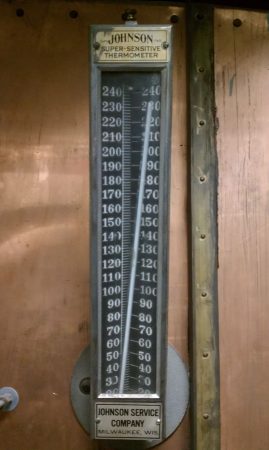
Johnson Controls Super-Sensitive Thermometer
Like your AC in summer? Warren S. Johnson, a professor in Whitewater, WI, invented the first electric thermostat.
Image courtesy of Wikimedia Commons.
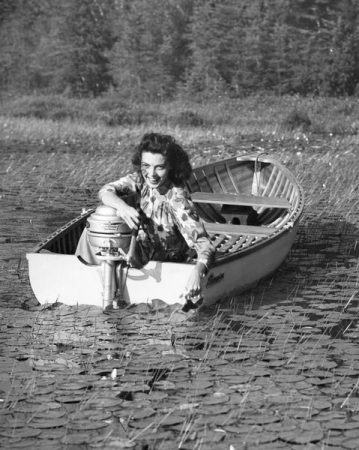
Ole Evinrude Outboard Motor
The first outboard motor had a crank that started to two-cycle engine propelling boats like the one pictured. Ole Evinrude invented the machine in Milwaukee going on to found the Evinrude Motor Company.
Image courtesy of the Wisconsin Historical Society, Image ID 7859
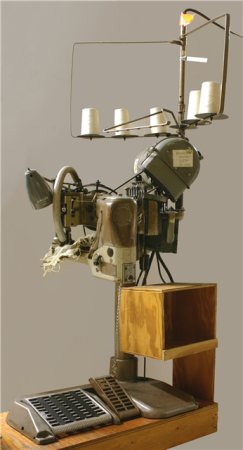
OshKosh B’Gosh Sewing Machine
OshKosh B’Gosh is an iconic Wisconsin brand, but how did this clothing manufacturer rise above the rest? What can this object tell us about manufacturing, fashion, and labor history?
Image courtesy of the Wisconsin Historical Society, Object #1997.54.1A-D
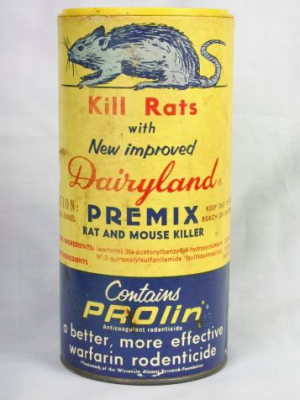
Dairyland Rat Poison
The discovery of the blood thinner Warferin by chemists at UW-Madison in dramatically influenced lives of Americans suffering from heart disease, but it also inspired new kinds of products, like this one: a rat poison produced in Milwaukee. Dig into the history of this object and find out about Wisconsin’s history of invention and some of its unintended– and surprising– consequences!
Image courtesy of the Wisconsin Historical Society, Image ID 100175
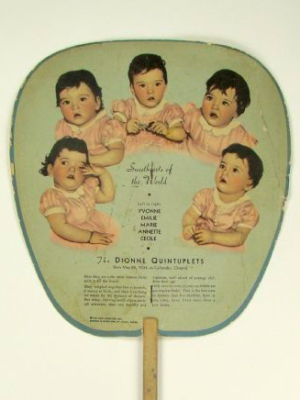
Dionne Quintuplets Fan
Lakeside dyeworks in Milwaukee printed this commemorative fan in 1936 to celebrate the Dionne quintuplets, the first quintuplets known to have survived infancy. Examining their lives and the way that Milwaukee celebrated their growth could tell you a great deal about childhood and health in Milwaukee and Wisconsin.
Image courtesy of the Wisconsin Historical Society, Image ID 97815
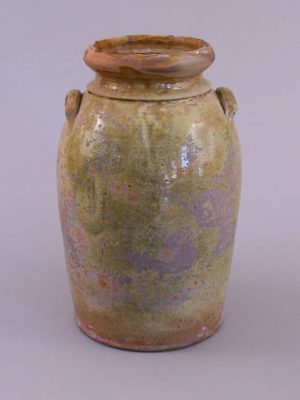
Jar by Hammett Pottery
This glazed, wheel-thrown jar was created in Cottage Inn, Wisconsin (near Belmont) by the Hammett pottery between 1853 and 1879. Potters in early Wisconsin took advantage of the region’s rich natural resources. Earthenware makers dug locally for their red and yellow clays, mixed glazes from lead mined in the southwest part of the state, and powered kilns with wood from nearby forests.
Image courtesy of the WHS, Pendarvis Site.
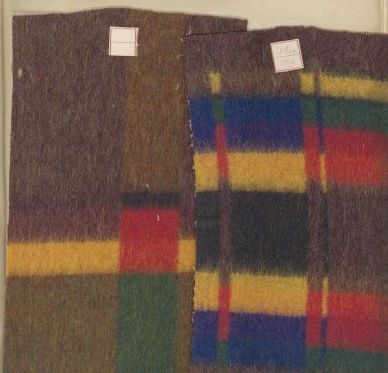
Appleton Woolen Mill Fabric Sample
Did you know that in the 19th century it was impossible to make paper without woolen felt? As one of the only paper-makers’ felt manufacturers west of Ohio, the fabric made at the Appleton Woolen Mill became an essential part of Wisconsin’s logging and paper industries. What can these scraps of felt teach us about agriculture, logging, and manufacturing in Wisconsin?
Image courtesy of the Wisconsin Historical Society, Image ID 108048

Paper Dress
A fad of the 1960s, disposable clothing made of paper seemed to answer the question, “Who is going to do laundry in space?” This dress was produced by Scott Paper Co., which had factories in both Oconto Falls and Marinette, Wisconsin, and was purchased by a woman in Madison.
A perfect object for someone interested in fast-fashion and fashion history, what can this object tell us about the lumber and paper industries in the state?
Image courtesy of the Wisconsin Historical Society, Object #1969.184.13
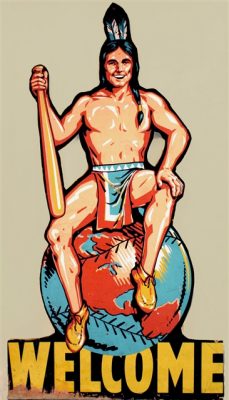
Milwaukee Braves Welcome Sign
In 1957 the Milwaukee Braves were at the top of their game. This object is a painted wooden sign made in 1957 to welcome visitors to Milwaukee for the World Series.
Image courtesy of the Wisconsin Historical Society, Object #2006.15.4

Ho-Chunk Moccasins
Beaded moccasins made by the wife of Chief Yellow Thunder, “Washington Woman”. She went by “Washington Woman” after a trip with 15 Ho-Chunk chiefs leaders to Washington DC in 1828 to meet John Quincy Adams. She was part of the treaty-resisting Ho-Chunk bands who defied the land cession treaties by walking back to their homelands after being deported.
From Oct 9, 1948 Baraboo News Republic article on donation:
Frances Swain says: “They were given to someone in my grandfather’s family. His name was Chipman Swain. He came from Vermont in 1859, and settled in what was then the Village of Newport. My mother, whose maiden name was Mary Warner, came to Baraboo when she was four years old, and used to tell us stories of Yellow Thunder. He was fond of her and used to like to see her doll which we still have.”
Image and object courtesy of the Sauk County Historical Society.
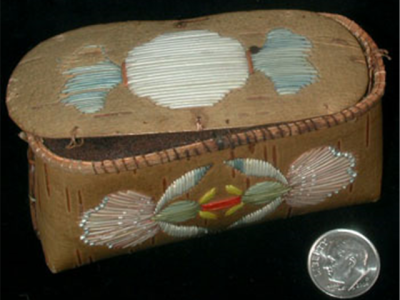
Birchbark Maple Sugar Container
Made by Rosalie Dousman, a Catholic missionary to the Menominee in the mid-1800s, this small birchbark container is a small object that speaks to the entangled histories of Menominee artistry, religious missions, and making maple sugar.
Image courtesy of the Wisconsin Historical Society, Object #1969.419
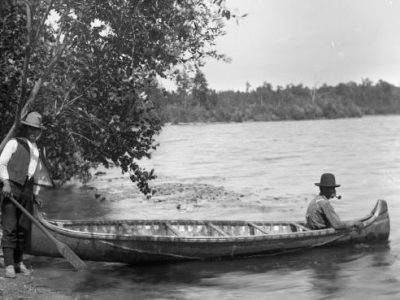
A Birch Bark Canoe
Wisconsin is filled with rivers and lakes, and from the precolonial period to the twentieth century, birch bark canoes were an important way to navigate through the state– and connecting the region to the Great Lakes, the Mississippi and beyond.
Image courtesy of the Wisconsin Historical Society, Image ID 82760